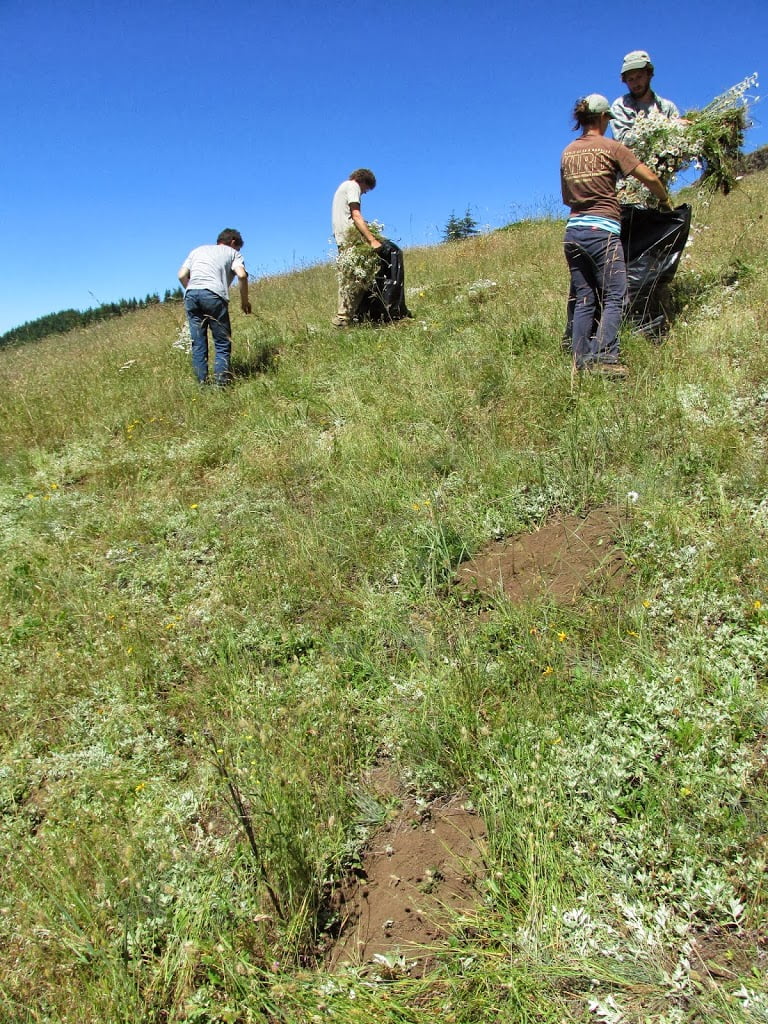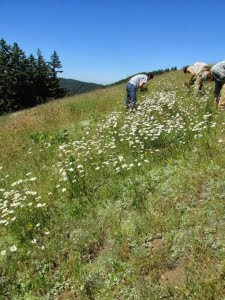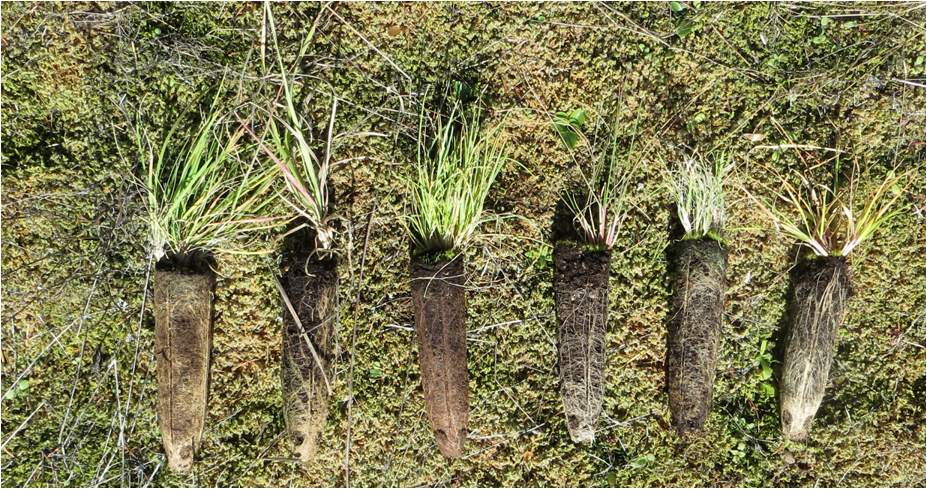
Horse Rock Ridge Outplantings and Updates
 |
| Denise Giles-Johnson and Erin Gray out-planting natives and removing invasive species. |
Since 2006, the Institute for Applied Ecology (IAE) has partnered with Eugene District BLM to coordinate research and restoration efforts at Horse Rock Ridge. Horse Rock Ridge is dually classified as an Area of Critical Environmental Concern and a Research Natural Area. The site itself is considered to be the largest “grassy bald” meadow west of the Cascades, and as such is a wonderful study site. It is also home to some fantastic geological features that help to shape the environment as a whole. We encourage you to read last year’s blog to learn more about Horse Rock Ridge!
 |
| Intern Andrew Heaston carries bags of removed invasive species. |
In previous restoration efforts, IAE has had great success with planting native plugs for restoration purposes, and as part of our continuing efforts, the Conservation Research Program out-planted 2000 plants in mid-October, 2013. In early 2013, seeds sourced from Horse Rock Ridge were propagated in greenhouses at Oregon State University (OSU). The seeds produced very robust, healthy plants, with high rate of success. This fall, with the help of volunteers from OSU’s GEO 300 course, we carried all plants up to Horse Rock Ridge. Plants were then split into groups of 50 for planting, consisting of 25 grasses and 25 forbs.
In 2013, we focused our planting in areas of mixed invasive and native plants; in these areas we targeted invasive plants, aiming to remove and replace them with natives. In many instances, multiple hairy cat’s ear (Hypochaeris radicata), velvet grass (Holcus lanatus), or sheep sorrel (Rumex acetosella) were pulled for every native plug planted. To fill the holes left by the removed invasive species, we used a combination of robust grasses including California brome (Bromus carinatus), prairie junegrass (Koeleria macrantha), Lemmon’s needlegrass (Stipa lemmonii), Roemer’s fescue (Festuca roemeri), California oat-grass (Danthonia californica), pine bluegrass (Poa scabrella), blue wild rye (Elymus glaucus)) and the ever-reliable restoration species, Oregon sunshine (Eriophyllum lanatum). Plantings were also supplemented with American wild carrot (Daucus pusillus), tarweed (Madia sp.), and common lomatium (Lomatium utriculatum).
The effects of our outplantings (and weed removal) were immediately visible, and although we cannot guarantee the survival for all seedlings out-planted this year, seeing such a clear positive impact is encouraging. Previous outplanting efforts at Horse Rock Ridge have resulted in significant increases in cover of native species and decreases in cover of invasive species.
Other Restoration Efforts:
Though not directly relevant to the out-planting success this year, earlier efforts to collect seed and control weedy invasive proved successful as well. Due to variability in phenology this year, most seed sources were ready later in the year than was expected, but we still managed to collect eight species (all species used in our restoration efforts above: D. californica, Madia sp., K. cristata, F. roemeri, E. lanatum, L. utriculatum, S. lemmonii, E. glaucus).
 |
| AFTER: Area post-removal. Looking good! |
 |
| BEFORE: Crew removing a patch of oxeye daisy. |
Some long-standing weedy plant patches were revisited and pulled, including a prolific patch of curly dock (Rumex crispus). Other weedy species tended to be more spare, including tansy ragwort (Senecio jacobaea), bull thistle(Cirsium vulgare), and common centaury (Centaureum erythraea). Though found in abundance in patches, the field crew made quick work of oxeye daisy (Leucanthemum vulgare) and foxglove (Digitalis purpurea) outcroppings. In one instance, false-brome (Brachypodium sylvaticum) was found along a tree line to the south. The area was thoroughly cleared of the species and we will check back next year. All-in-all, a great year for Horse Rock Ridge.
For more information:
2012 Horse Rock Ridge Blog
&
Horse Rock Ridge Reports

